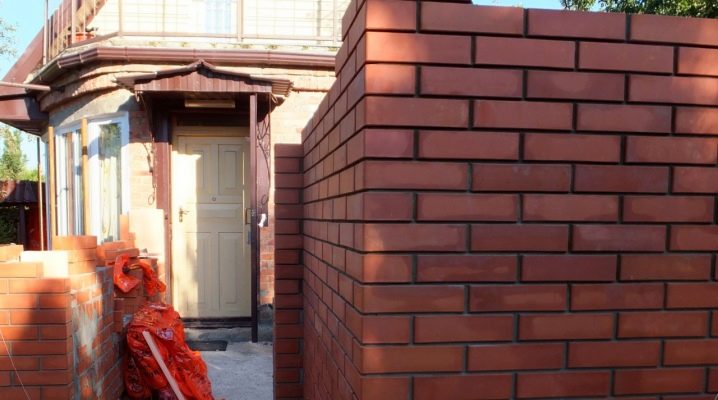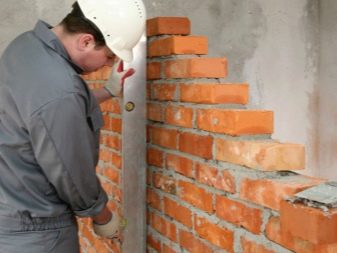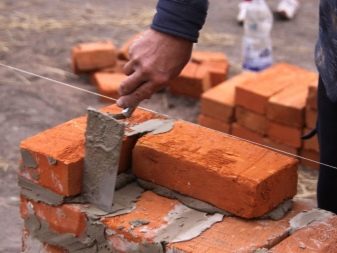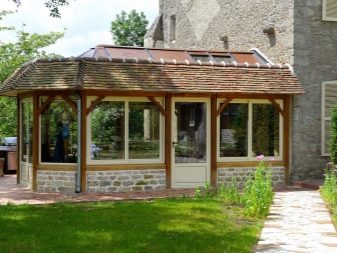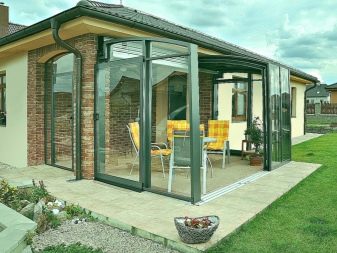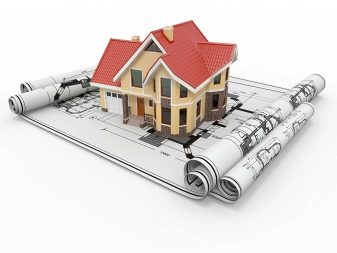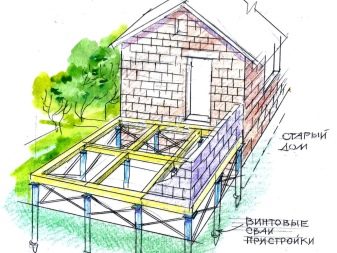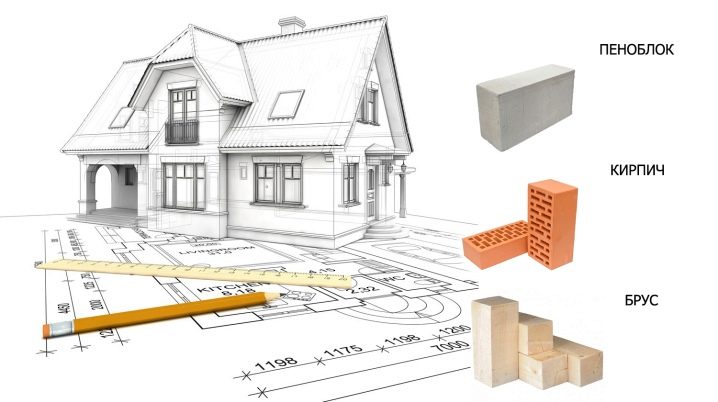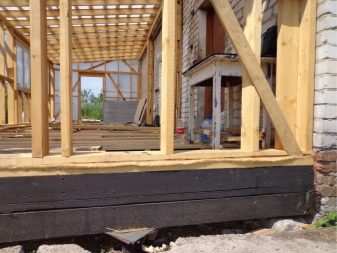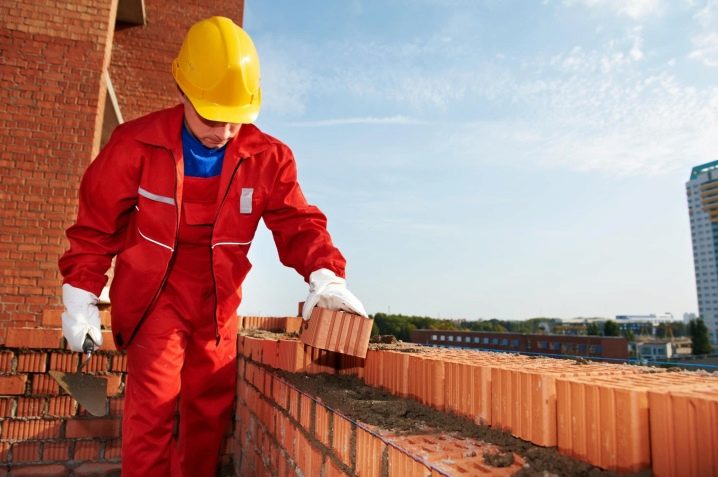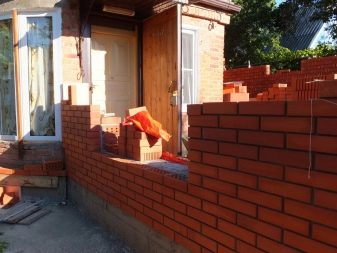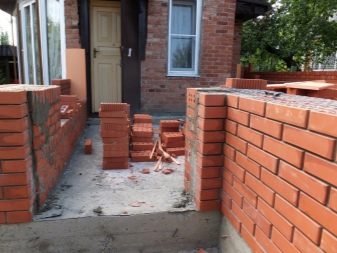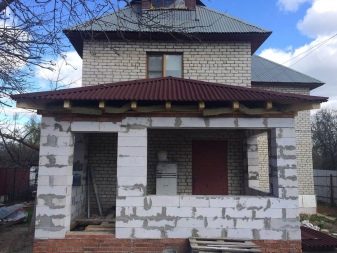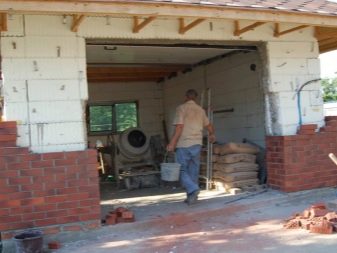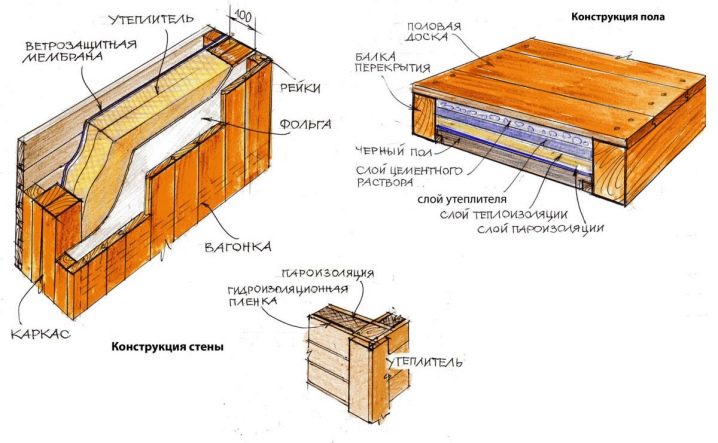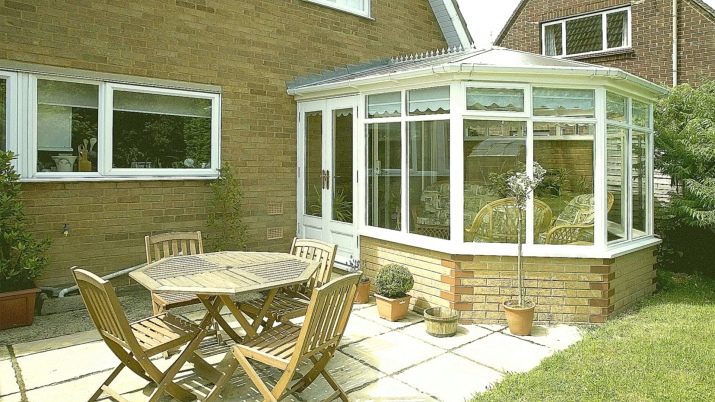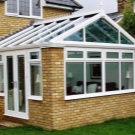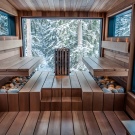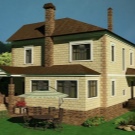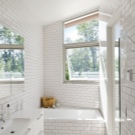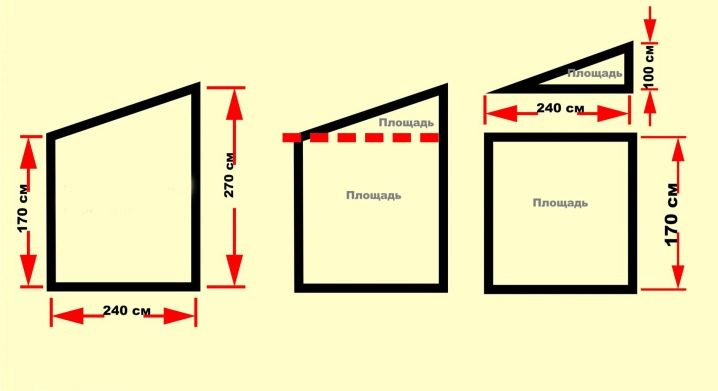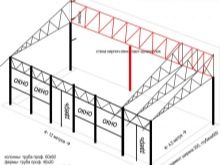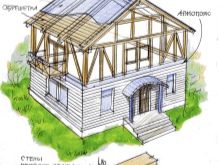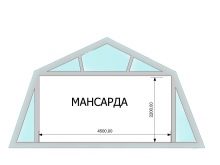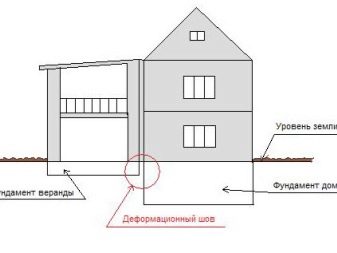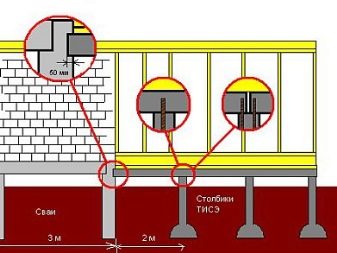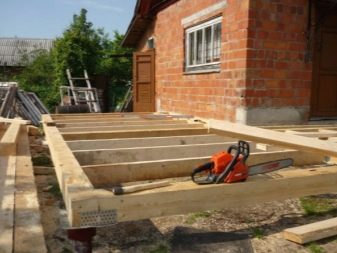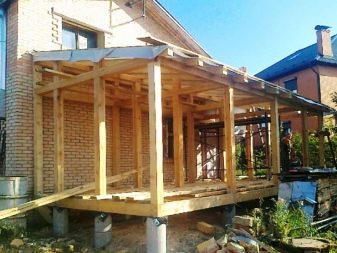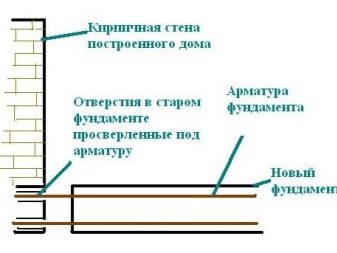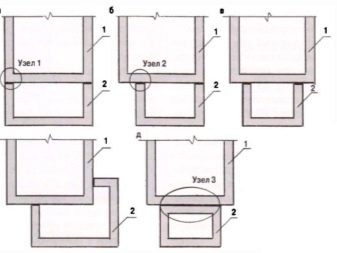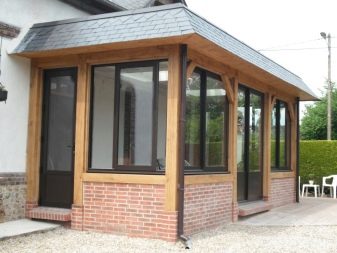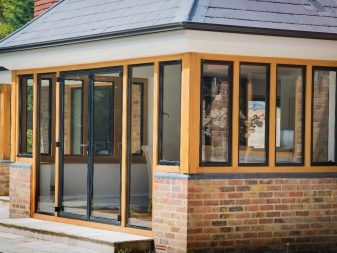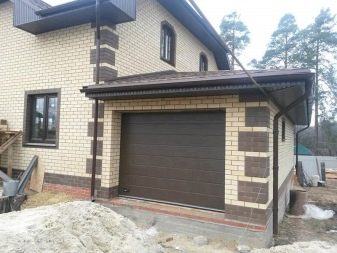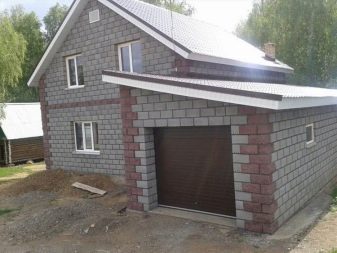Addition to the brick house: how to do it yourself?
An extension to a home is an excellent solution for expanding living or business space in a house of any type. It is important that all without exception, construction work can be done personally.
Design features
Most people buy or build housing, building on opportunities at this moment. But the extension to the house, the owners are forced to finish building on the basis of necessity or desire. There is a problem, how to attach the necessary square meters, to get an affordable price, correctly and thoroughly. Again, in order to save, almost everyone prefers to construct it with their own hands.
Of course, this will require some abilities and building skills, as well as an understanding of the technology of work, but there is nothing particularly difficult in this process.
The assistance of professionals may be needed at the design stage of the building, in addition, when connecting communications inside the annex. In addition, there are often some difficulties in the design of the structure in the implementing control bodies. More often, the attachment is carried out in order to form an additional room, garage, veranda, terrace, storage room, porch. There are a lot of alternatives - everything will be determined on the basis of your own requests and wishes.
The main thing is to competently implement the construction of the foundation, walls, roofing and isolate the building from the influence of moisture, moreover, correctly join the new structure to the main one.
A side extension with a connected roof is an acceptable and simple option, since it is only necessary to slightly extend the roof to the size of the extension. When choosing this type, additional square meters are simply completed to the main building. Regardless of the materials used, it will be necessary to make the appropriate foundation.
The extension can have various sizes, however, unnecessarily large structures, even in large areas will look ugly.The choice of an extension with a separate roof will be relevant, as a rule, in those variants if there is no possibility to make a roof independently connected to the house. In this case, significantly increases the cost of building materials and time.
The main question, as a rule, will consist in the construction of the foundation, since it was unlikely during the construction of the house that the extension would be completed in the future. For this reason, not every foundation, including the most durable, can withstand an additional floor.
If it is safe to say that the foundation will be able to transfer additional overloads, then before starting construction it is necessary to consult with professionals who can not only carry out any required calculations, but also give recommendations on strengthening the existing foundation with their own hands.
You can make an extension with your own hands from CIP panels, aerated concrete, gas blocks, metal and other materials, if you follow the recommendations of specialists. You can apply a baseless version or on piles. Today, a two-story corner construction is quite popular.But in any case, you must first prepare a drawing.
Types and materials
The construction method will depend largely on the design decisions that will be installed. Extensions to the building can be varied. Prior to the beginning of construction, it is necessary to establish the purpose for which an extension to the building is needed. This will make a decision on what materials it will be made of, what the foundation will be, the presence or absence of communications, the number and characteristics of heat and waterproofing, in addition, many other factors. For the construction of extensions, as a rule, used timber, brick or foam blocks.
Of course, other building materials can be used in accordance with the wishes, however, these are considered the most popular.
Extension from a bar
The use of timber in order to build an extension is the best and most acceptable option in almost all cases. In this case, it is possible to use any timber - planed, glued, rounded. The characteristic features of the timber make it possible to perform all the work without exception with his own hands and in short terms.
The main advantage of timber is that its production is carried out on woodworking machines, therefore, every time there is an opportunity to choose the desired shape, starting from personal requirements and wishes. In the factory, the timber is treated with specific compounds that provide long-lasting resistance of the timber to various adverse effects. Regardless of the type of timber material is considered environmentally friendly.
If necessary, the outer part of the timber can be trimmed with all sorts of facing or finishing materials.
Brick extension
It should be noted that the construction of an extension with a brick will require the presence of certain skills and some experience in the conduct of brick masonry. Only with the right approach and following all the technologies, you can correctly make a high-quality installation yourself. In another case, to carry out the work should hire professionals for laying bricks and similar materials.
The use of bricks for the construction of an extension has some peculiarities. If in the future it is not planned to finish or trim the brick wall with other materials,then in this case it is preferable to build an extension from the back side of the building, because even if the brick annex has only one floor, then it has an impressive weight, so before building it you should think about pouring a strong foundation.
Material costs in the construction of an extension with a brick are impressive largely due to the need for a solid foundation and the invitation of professionals. It is quite difficult to accurately connect the extension with the house on your own.
Foam block extension
The attachment from foam blocks possesses solid durability. This material does not require significant expenses and the use of additional insulation materials. The use of foam blocks for the construction of additional premises to the building with his own hand has several advantages.
There is no need to fill such a strong foundation, as when using bricks, as foam blocks with relatively large volumes have a relatively low mass. And also the use of such blocks will not require the walls of the annexe to be insulated, such an extension can be built personally and much faster than brick.
But it is worth noting that additional costs when using foam blocks may be needed in order to protect the structure from various adverse influences. As a rule, siding or facing brick, as well as other materials, are used for this purpose.
Frame extension
The construction of an extension on a frame basis is also considered to be an absolutely acceptable option at a cost that does not require significant cash outlay. The frame structure is formed on the basis of metal beams or wood beams, which are put according to a special technology. Everything can be done personally, however, if there is a shortage of skills in this industry, it is preferable to consult with experts first.
After the installation of the frame is completed, the inner and outer walls are lined with the necessary building materials, such as MDF, chipboard and others.
Often interested in the question, during the installation of what, in addition, an effective heat-insulating layer is formed. In this case, the insulation may be polystyrene foam, insulation boards, mineral wool, spray insulators.In addition, regardless of the type of insulation is also insulated using moisture-proof insulating materials.
Ideas
It is worth paying attention to several creative ideas from professionals.
- Terrace. These extensions are popular on summer days. However, at the request of the owner, the structure can be insulated, equipped with windows and used in winter. Verandas are made of any materials, including foamblock bricks and wood.
- Boiler room. If the house from the very beginning was planned as a summer building, then it may not take into account the place for heating appliances. In this case, you should attach a place for the installation of heating equipment.
- Bathroom. Such an extension is mainly used in villages, namely in country houses, not previously equipped with a bathroom. In this case, the room needs to be completed in order to increase comfort. An extension to a brick house can be made from any building materials.
- Living rooms attached in order to expand the area of housing. In some cases, the size of such extensions may be higher than the size of the primary structure.For the construction of such rooms, brick or blocks are used as a building material, less commonly wood.
- Garage finish building to the building in order to save because of the possibility of a common wall or to heat the building for a car with a common heating system. When building a garage, most of them use frame construction and brick.
- Bathhouse This extension, as a rule, is attached to the house or cottages. In this case, they have a common wall. Logs are generally used for this type of attachment.
Construction Guide
Calculations
Before you start building an extension to a building, it must be formally legalized in a special instance, regardless of its purpose. To make calculations, estimate the necessary material and find out the cost of the future structure are the initial tasks. For these purposes, you can contact the experts or calculate everything yourself. To calculate the material it is necessary to calculate the quadrature of the extension.
The calculation is made according to the following formula: (perimeter) x (height) = total square of the room.
But if windows and doors are planned in the outhouse, then they should be subtracted from the total quadrature, namely: (total area of the room) - ((height of the window opening x width) x per quantity + (height of the door opening x width) x quantity) = quadrature for calculating the amount of building materials.
The choice of the type of structure
There are a number of known types of extensions. According to statistics, the most common extensions are the following:
- side extension with connected or separate roof;
- superstructure in the form of a loft;
- second floor.
How to build?
To make an extension to the brick house, The following algorithm should be followed:
- proceed to construction should markup the area. For this, the upper layer of soil is removed, the zone is leveled and marking is made;
- next, designate the boundaries of the attachment in accordance with the plan. In the corners of the future structure, pegs are hammered and tensioned;
- every building requires a solid foundation of the house. The foundation for construction is not recommended to be combined with the main building, as they have different levels of shrinkage;
- between the foundation of the building and the extension should keep a distance of about 5 cm;
- when building a foundation, you need to take into account the designed weight of the structure and the properties of the soil.When building on soft ground, it is likely that the base of the house will shift, which may lead to the separation of the extension from the walls of the building. The lightweight foundation does not support the weight of the brick walls, for this reason it was not recommended to build a brick extension on this basis. It is preferable to select the tape base extension;
- before pouring concrete, dig a trench, the scale of which is chosen depending on the characteristics of the structure under construction;
- in a ditch lay a timbering of a suitable design that becomes from the boards brought down between themselves;
- concrete is prepared from three components of sand, one component of cement and six components of rubble;
- base under the annex is flooded in layers. The top of the annex is smoothed with a trowel and left until fully set;
- if it is necessary to build an extension in a short time, you can choose a frame system that is easily assembled and folded from a wooden frame and panels;
- finishing can be carried out immediately after construction. If necessary, the extension can be converted.
An extension made of brick is the most difficult to implement, but you can build it with your own hands,Adhering to the following algorithm:
- Before the construction of the walls, it is necessary to check the flatness of the base of the house If it is not very smooth, it is possible that the walls will break during shrinkage;
- Attaching an extension to the wall of a house is done using holes that are made every 3 rows. In them the metal framework is substituted;
- when building a brick extension to the building, the reinforcement will stay in the joints of the masonry;
- reinforcement is used to maintain the distance between the bricks, but it should not be of very large diameter;
- already after the walls are driven out, their top is fixed with a concrete girdle. After hardening of the solution proceed to the construction of floors.
The quality of the attachment depends on the chosen project and the materials used. The extension to the brick house can be made of mounting panels, wood or brick. Each person possessing a minimum of skills in the field of construction is able to build it with his own hands, and most importantly - to properly fix the structure.
For more information on how to do these works with your own hands, see the following video.
Beautiful examples
This type of attachment, as the porch is the hallmark of the house. The design does not require large expenditures in the material and physical terms, but at the same time gives the house a certain charm.
The kitchen in this embodiment can be made large.
Veranda - this is the most common type of extensions. It can serve as a protective addition to the house, and be a mini-hallway. In such a room, you can make room for storing shoes and outerwear.
An extension to the house in the form of a garage helps save space on the site. And also this design is convenient because in inclement weather it is not necessary to go outside to get to the car.
